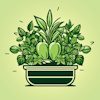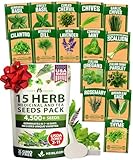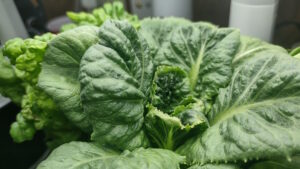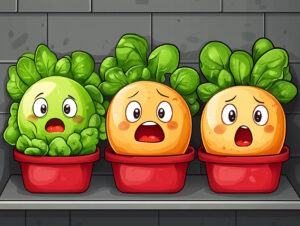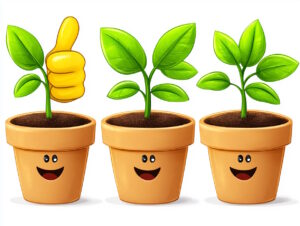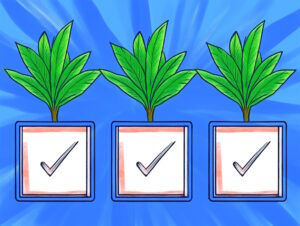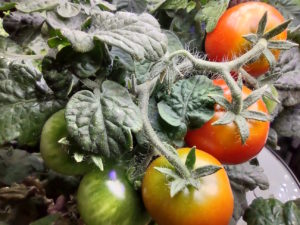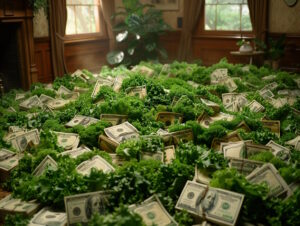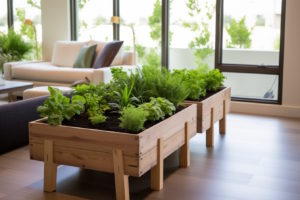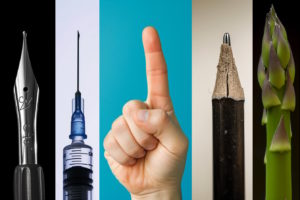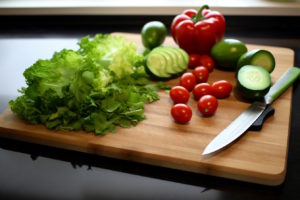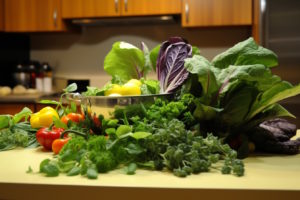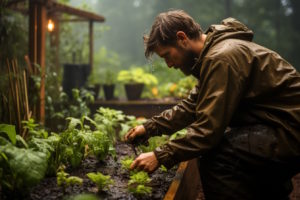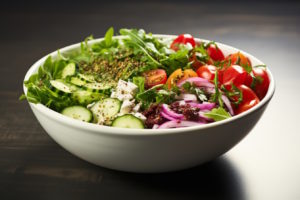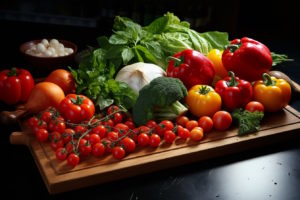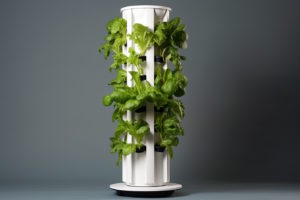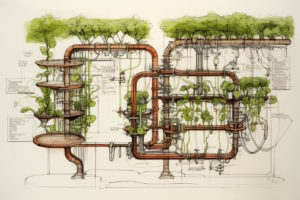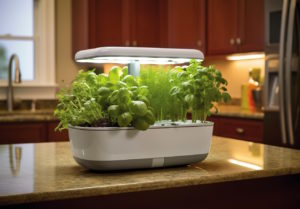How to Get a Salad Every Day from Your Indoor Garden
You can grow many of the ingredients for your own salads with your indoor garden. Unfortunately, if all your plants mature at different times, you get a partial salad with different ingredients each day. Clearly, coordinating the growth of multiple types of plants is necessary to get a complete salad. Luck isn’t going to cut it. If you really want to get a salad every day from your indoor garden, that requires planning.
Here are the steps to set up a continuous growing routine that provides you with a salad every day from your indoor garden.
Define Your Goal
Define your objectives first. For the sake of this article, your objective is to eat a salad every day using ingredients acquired from plants you grew indoors.
Your goal is to set up a system for growing plants indoors such that those plants provide enough produce to make a salad every day.
Answer these questions to help you define your goals.
- How often do you want to eat a salad?
- How big a salad are you eating?
- How many people are eating a salad with you?
- What ingredients must be in every salad?
- What ingredients would be nice to have in your salad?
- What can you grow given the equipment you have or can get?
Your answers to these questions may change somewhat as you continue reading through this article. Over time, your answers will evolve as your skills, capacity, and needs change. Be flexible.
Not Your Goal
You have a goal, but sometimes you can lose focus of your goal. Keep these admonishments in mind.
Your goal is not to grow food in excess so you can give it away or store it long-term. You want just enough to meet your needs for a fresh salad. If you harvest any excess, you’ll use it to get you through the days your plants have nothing to give.
Your goal is not to grow every plant you think possible to grow indoors. At least when you are starting off, you have limited time, energy, and capacity. Focus your attention on the plants you’ll need for your salad.
List Your Ingredients
What do you want in your salad? Here are some ideas.
- A variety of lettuce leaves
- Cherry tomatoes
- Radishes
- Carrots
- Bell peppers
- Cucumber slices
These salad ingredients can be grown indoors using a hydroponics growing system and soil.
Build Your Garden Incrementally
You’ve probably grown some food indoors already. Like many people who start growing indoors, you have a few herbs growing in soil or a hydroponics grow system. What you are learning now is not so much how to grow your food, but how to schedule growing your food.
Lettuce is easily grown in a hydroponic grow system. It’s like they were made for each other. Lettuce is expensive to buy at the grocery store and your choice of variety is slim. You have many options when growing it yourself. Starting with lettuce makes good sense.
Follow the steps below to create a consistent harvest of lettuce. Buy the other ingredients for now. Once you have lettuce started, branch out to other ingredients as you feel comfortable doing so. Apply the system to each plant you add to your garden.
If you have a hydroponic grow system, focus your attention on maximizing its potential with lettuce and tomatoes before starting a soil-based indoor garden for radishes or carrots. Get one part of the system functioning well before turning your attention elsewhere.
Don’t feel obligated to start growing plants for every salad ingredient on the first day of the project. It’s overwhelming. Start small and grow your skills as your garden grows.
Establish A Baseline
You’ll need a baseline for each plant you want to grow for your salad. You need to know when you start a seed today what days in the future you’ll be harvesting from that plant. You’ll use that knowledge to grow cycles of crops that overlap. You don’t want any unplanned gaps between crops.
To establish a baseline, you need to know this information.
- How many days does this plant take from sowing to first day of harvest?
- How many days does the harvest period last per plant?
- How many units (lettuce leaves, tomatoes, cucumbers) does each plant produce per harvest?
Clearly, the data you collect fluctuates with each crop. For this reason, document the timetable for every crop so you can determine the average numbers for each data point.
Note the shortest and longest time frames for all types of plants, so you can compare what you see with your crop against what you have experienced in the past. If a crop seems to be taking longer than usual to mature, comparing to your records will show if you’ve had crops take longer.
You’re recording how your garden grows so you can plan your sowing days to ensure a steady harvest. You can’t just wing it and get a reliable harvest.
How Much Produce Do You Need Daily?
You next determine your need. You set goals earlier describing how many salads you wanted and how often you wanted them. Now is the time to get more specific.
For that you’ll answer these questions.
- For one salad, how much do you need to harvest from each plant?
- How many salads do you need to make?
- How many plants of each type are required to fill all your salad bowls during one harvest period?
As you answer these questions, you’ll define your salad with precision. You want your salad bowl to include three leaves from lettuce variety A, three leaves from lettuce variety B, four cherry tomatoes, one chopped up radish, four slices of cucumber, and a grated portion of one carrot. That’s precision.
Being so precise may seem ridiculous, but doing so ensures a reliable supply of salad ingredients. If you don’t know how much food to grow, you’ll end up growing too much and wasting it or growing too little and going without your salad for several days.
Once you have a system up and running, where you know when to start seeds and you know how many salads you’ll get from each lettuce stem, you’ll understand the ramifications of changing the size of your salads. But starting off, you need to consciously document such things.
Keep Accurate Records
You have too many different events taking place to keep track of them all in your head. You’ll forget the exact date you planted this, that, or the other thing. You need exact dates if you are to make accurate predictions of future harvest time frames and quantities.
Document the following actions and events.
- The date you planted any seed in soil or a hydroponic system
- Exactly what seed you planted
- When you watered plants in the soil or added water to a hydroponic grow system
- When you added nutrients to a hydroponic grow system or plants in the soil
- The date you first harvested a leaf, clipping, fruit, or vegetable from any plant
- The amount you harvested from each plant every day
- The size of each plant at its greatest
- The date you ended the harvest of any plant
Keeping so many records may feel tedious, but stick with it. You’ll need this information to ensure you have a wonderful salad when you want it.
You’re tracking what you plant and when. That’s to be expected.
You’re tracking when you started harvesting from each plant, the yield of each plant, and the date you got your last harvest so that you can later predict when you need to start a seed to get a harvest on a given date.
You’re tracking the size of the plant so you know whether you need to expand your indoor garden to meet your goals. You want a basic salad with three varieties of lettuce and five cherry tomatoes for lunch each day. But if you have an AeroGarden Harvest, you may find the tomato plant leaves you no room to grow your lettuce. You may need to invest in a second AeroGarden Harvest or maybe an AeroGarden 24XL.
Create A Calendar
At this point, you have enough information to create a calendar. The calendar provides you a visual planner for your garden.
You will mark on your calendar the date you planted a seed, then count the days into the future when you expect to begin harvesting food from the plant that will grow from that seed.
You’ll predict the period of time the plant that grows from that seed will produce food. And this is how you achieve your goals, right here. You’ll be able to schedule when you’ll plant the seed that will replace the plant that will grow from the seed you just planted today.
Creating a calendar is the final step in your project. Once you have a calendar, you need only stay on schedule. Plant the seeds when the calendar says to plant the seeds, and you’ll enjoy your salads as planned.
Idle Capacity
You are building a rhythm to your grow schedule. You may find that for one lettuce variety you are starting a seed pod every 14 days. For another lettuce variety, you start seed pods every 18 days. During this time, to help you rotate crops, you may have a pod station on your hydroponic grow system idle for a few days. That’s alright.
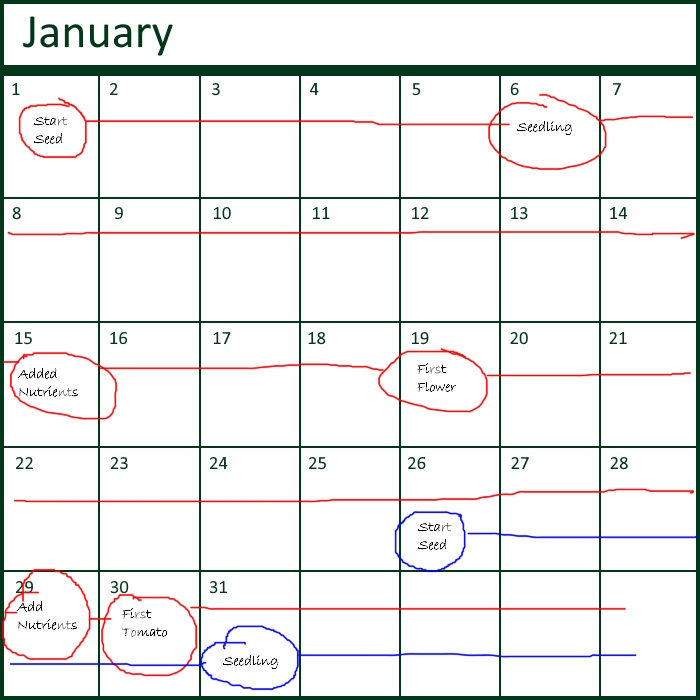
Adjust Over Time
Sticking too strictly to the calendar can sometimes steer you off course. Be flexible. If you find the radishes are growing in 22 days instead of 20 days, adjust your schedule and your garden. Grow an extra radish or two regularly to cover the lag days.
You cannot know the day you decide to start this project all the different ways your plants will grow. Take advantage of your ability to start an indoor garden anytime. If you look at a plant and think, “This plant is not doing well,” then consider terminating that plant and starting a new one. Reset your calendar, record why you believe the plant failed, and commit to doing things differently on the next try.
Manage Your Capacity
Capacity is the amount of food you can grow given your current indoor garden equipment.
Perhaps you are at capacity for growing radishes with your current equipment, but your salad lacks a radish every third day. Your options are to either reduce how many radishes (or portions of a radish) go in each salad or increase your capacity to grow radishes.
If you double the size of your radish garden when your salad is only short a radish every third day, you’ll probably end up with extras. Radishes keep well in the refrigerator, so you can adjust your seed schedule to include a gap in which you eat your stored radishes while the next crop grows. That’s one option.
Other options include increasing the number of radishes in your salad, eating the radishes as snacks at other times of the day, or giving them away. Maybe you can trade with a friend who has extra food from their indoor garden!
But always keep documenting what you’ve done and the results you’ve observed. You’re not looking to grow too much food on a consistent basis.
Your Refrigerator is Your Buffer
Some of your salad ingredients will be stored for a day or two in the refrigerator. This is acceptable. The refrigerator is your buffer you go to when leaving food on the plant may result in loss.
You can capture any food from a plant at the end of its life span before you clear its pod to begin a pod with a new plant. If the food you collect exceeds what you need for that day’s salad or is for tomorrow’s salad, keep it fresh in the fridge.
If you find yourself consistently storing extra food in the refrigerator, consider adjusting your calendar to reduce any waste.
Experiment
Allow for experimentation. Try different varieties of lettuce or radish. Maintain your regular grow schedule to ensure you still get your daily salad, but leave room to grow something new.
You can experiment with how often you add nutrients to your hydroponic grow system or the soil. Since you are keeping records, you’ll have the means to compare results. Do your plants seem to fare better or worse? Document your observations on the effects of one nutrient schedule compared to another.
Putting It In Practice
To bring it all together, here is a review of the entire project.
You name your objectives. You want one salad per day. You are the only person eating a salad. Among the other ingredients, you want cherry tomatoes. Five cherry tomatoes, to be exact.
How would you plan your indoor garden so you get five cherry tomatoes per day?
Start the Seeds
You start a seed for a dwarf tomato plant in your hydroponic growing system and mark the date on a calendar. Due to the expected size of the tomato plant, this is the only active pod. The holes for other pods are covered to prevent algae growth.
You grow the tomato plant as per the instructions for the hydroponic growing system.
You mark each event in the growth of your tomato plant on a calendar. To help you visualize the progress, you draw a line between each event. The calendar shows a single line representing a single plant
Observe the Harvest Period
You note on the calendar the day the first tomato ripens.
When the day comes for the first harvest of your five tomatoes, you mark the happy occasion on your calendar.
As your tomato plant produces fruit, you document how often you water and feed it. This information can help you decide when and how to expand your indoor garden.
Harvesting for Your Salad
As your tomatoes ripen, you begin the harvest. Each day, you select the five ripest tomatoes to grab for your salad.
Knowing the typical yield of a tomato plant allows you to estimate how many tomato plants you’ll need. You document how many ripe tomatoes you get each day.
You don’t get exactly five each day, as the tomatoes ripen at different times. As a matter of fact, you discover your tomato plant provides you only two or three ripe tomatoes daily. You also estimate this tomato plant will be exhausted sooner than expected.
Adjust Your Capacity
You determine a second tomato plant would make up the difference between the number of tomatoes you are getting and the number of tomatoes you want in your salad. You must adjust your capacity to handle a second tomato plant and set up a growing schedule.
However, to ensure a consistent harvest of tomatoes, you decide to add a third tomato plant and stagger the seed schedule of the three plants.
You have taken what you’ve learned about growing tomatoes indoors and adapted to meet your goals.
You purchase or construct the equipment to grow two more tomato plants. You then set up a schedule to overlap the lifespan of your plants. By planting the next batch before the current batch dies off, you ensure a consistent and continuous harvest.
You’ll always have three tomato plants growing, but they will be in three different phases of life. As one tomato plant dies, another one is beginning to offer ripe fruit.
Experiment
You document each watering and feeding, so you can identify any patterns that could help you increase your crop for future tomato plants.
You read that the recommended feeding is 4 ounces per 14 days for this plant, but you find that by adding 3 ounces of nutrients every 10 days, your tomato plants produce more fruits and they ripen earlier.
Maybe the more frequent feedings resulted in a shorter lifespan for your tomato plant, but that tomato plant gave you 20% more tomatoes. Evaluate your capacity. Can you grow enough tomato plants to offset the shorter lifespan of future plants?
It’s your garden, in your house. What works for you might not benefit somebody else. Experiment, but document well.
Expand
You started with tomatoes, but now you want to try lettuce. You expand your capacity to allow for three different lettuce varieties producing while three more are growing. You set your goals, plan your lettuce varieties, estimate your harvest needs, and start some seeds.
You continue with the calendar tracking system to make sure all goes as planned. You’ve learned the system for growing your plants, and you can now use that system whether it’s tomatoes or lettuce or radishes or just about any other plant. You’ll find you succeed far more often with a good plant.
Key Takeaways
Growing your garden indoors is fun, but if you want predictable harvests, you’ll need to plan. And if you hope to plan accurately, you need data, which comes from your observations.
Your indoor garden was never an excuse from work if you wanted comparable results to an outdoor garden. The work just changed. You’re planning a year–round harvest now. On the plus side, you get to do it in an climate–controlled house with less kneeling.
So, take the planting system articulated above and apply it to your other goals. Maybe you want to make your salsa recipe each weekend for the crew to eat with chips while watching the games. The same system works for tomatoes, peppers, and cilantro.
Eventually, your calendar system will become second nature. You may be tempted to abandon recording events on your calendar, but you have so many things to remember, it’s best to continue the practice.
You’ll have a highly productive indoor garden while wasting the least food using your system. And you’ll enjoy a great salad, too!
You Have A New Hydroponic Growing System. Now What?
You have a new indoor garden and high hopes. What do you do next?
Keep ReadingSurviving in a Post-AeroGarden World
AeroGarden announced its closing effective the first of January, 2025. Farewell, good friend.
Keep ReadingThe Most Reviewed Indoor Gardening Equipment
You don’t get thousands or tens of thousands of reviews by being a horrible product. What works? Find out here.
Keep Reading32 Factors to Consider When Setting Up Your Indoor Garden
Avoid making simple mistakes when you set up your indoor garden.
Keep ReadingYou Can Grow Tomatoes Indoors
You can grow delicious tomatoes indoors all year long, and it’s actually quite easy. Get started now!
Keep ReadingIs Indoor Gardening Expensive?
Is gardening indoors expensive? Relatively, no.
Keep ReadingA Raised Bed Garden Indoors? Bring It On!
Learn how to grow your food indoors using an indoor garden bed.
Keep ReadingTips For Growing A Bountiful Indoor Garden
Make your life easier and grow more food indoors with these tips, tricks, and suggestions.
Keep ReadingHow to Choose Your Hydroponic Growing System
Ready to buy a hydroponic growing system, but not sure what features matter? Start here!
Keep ReadingHow to Plan Your Indoor Garden
Get more from your indoor garden by gardening with a purpose.
Keep ReadingIndoor Gardens Aren’t Outdoor Gardens Indoors
When you grow your garden indoors, you leave the old traditions and limitations outdoors.
Keep ReadingHow to Get a Salad Every Day from Your Indoor Garden
You can grow an indoor salad all year long. Learn how!
Keep ReadingWhat Can I Grow with My Indoor Garden?
Spoiler alert: Almost anything! This is a LONG list. And it’s really easy.
Keep ReadingLimited Floor Space? Go Vertical With Your Garden!
Learn about vertical indoor gardens and discover your options.
Keep ReadingHow a Self-Watering Hydroponic System Works
Get the best self-watering hydroponic system by learning how they work.
Keep ReadingWhy Your Outdoor Garden Should Be Indoors
Bring your garden indoors for year-round produce without the back-aches.
Keep Reading
